Overview
In general, based on the short time-scale for this project, I feel that the sequence I have produced has a good flow and pace to it and fits well with the image systems of the film. Throughout this project I have enjoyed researching into the design and production of the film. However, I would have liked to add more detail to fit in with my original ideas and the complex detail that is seen throughout the design of the film.
Workflow
My workflow for the project started well; going from a block storyboard edit and using MAYA's camera sequencer to pace out the sequence. This was largely used for the temple shots and allowed me to time to the music. However, due to running out of time for the second half of the piece, the sequencing got rushed, which in hindsight actually took longer to fix than if I had followed the workflow in the section.
As we didn't have a large amount of time, I made sure I was rendering one shot, while working on the next shot. This meant that I didn't have a large amount of rendering to do before the deadline and I feel best utilised the facilities available.
Product
Overall, I am happy with the product. However, if I were to do the project again, I would defiantly look into using Vray Renderer to get better/ more realistic output. This renderer also has some very nice lights that produce detailed shadowing and shading. I would also like to have gone out and taken a lot more primary images for texturing to get a more realistic look. I think, while some tweaks are required, the flow of the shots and camera angles flows with the very drastic changed that are seen throughout the film.
Conclusion
All things considered, especially with the time-scale, I am happy with the outcome. In future, I would defiantly work on the time management better earlier on in the project and scale down the ideas before rushing off and building huge cityscapes and detailed models. I think the most important think I have got out of this project is working out a workflow that works well for me.
TITLE SEQUENCE - THE FIFTH ELEMENT
Friday, 1 March 2013
Tuesday, 26 February 2013
Monday, 25 February 2013
The Final Element
Original thoughts
The original plan for this section was to zoom out of the earth, through the traffic light barrier, past a sign and then finishing on a 3D space ship with the directors name.
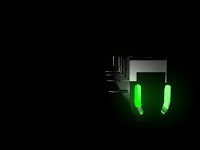
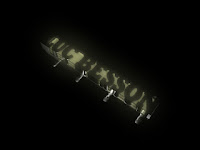 I originally designed the ship to be rendered with the vector renderer, so when I changed to using mental ray instead I had to do some minor redesigns.
I originally designed the ship to be rendered with the vector renderer, so when I changed to using mental ray instead I had to do some minor redesigns.
The original plan for this section was to zoom out of the earth, through the traffic light barrier, past a sign and then finishing on a 3D space ship with the directors name.

 I originally designed the ship to be rendered with the vector renderer, so when I changed to using mental ray instead I had to do some minor redesigns.
I originally designed the ship to be rendered with the vector renderer, so when I changed to using mental ray instead I had to do some minor redesigns.
Despite the time spent on development of the sky ship, I still aren't completely happy with it and have decided to completely change the way I'm going to approach this sequence. I will add more names than planned on the sign board and then use the traffic light morphing text I tested in the planning stage to show the directors name before fading out to the computer screen from the film. I felt this ending flowed into the new sequence better than it would have done if id have ended it with the 3D ship.
Saturday, 23 February 2013
The Desert/City Element Part 2
As I said in the previous post, I have been back to the desert shots and adjusted the timings to slow them down a bit.
I now have a week to refine and finish the project, so I'm going to start by finishing off the city.
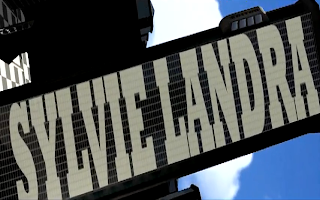 I was using mental ray sun and sky physics for all the desert and city shots to get a nice even distribution of lighting. Unfortunately, after rendering some areas showed the edge of the geometry. This meant that I had to create and track in a replacement sky and desert matte painting. This wasn't an ideal solution as the depth of field isn't as accurate as it would have been if it was exported from Maya.
I was using mental ray sun and sky physics for all the desert and city shots to get a nice even distribution of lighting. Unfortunately, after rendering some areas showed the edge of the geometry. This meant that I had to create and track in a replacement sky and desert matte painting. This wasn't an ideal solution as the depth of field isn't as accurate as it would have been if it was exported from Maya.
I now have a week to refine and finish the project, so I'm going to start by finishing off the city.
The first step of this was working out the movement of the camera to ensure that the text can be read on the buildings (as that is the main purpose of the piece). One Id got the sequence mapped out, I was able to fill in the blank parts of the city without having to waist time building geometry.
 I was using mental ray sun and sky physics for all the desert and city shots to get a nice even distribution of lighting. Unfortunately, after rendering some areas showed the edge of the geometry. This meant that I had to create and track in a replacement sky and desert matte painting. This wasn't an ideal solution as the depth of field isn't as accurate as it would have been if it was exported from Maya.
I was using mental ray sun and sky physics for all the desert and city shots to get a nice even distribution of lighting. Unfortunately, after rendering some areas showed the edge of the geometry. This meant that I had to create and track in a replacement sky and desert matte painting. This wasn't an ideal solution as the depth of field isn't as accurate as it would have been if it was exported from Maya.Thursday, 21 February 2013
Presentation Feedback
Well today was the day when my work gets put under the scrutiny of my fellow course mates and lecturer.
While I had more to present than some members of the group, I still was unhappy that I did not have a completed piece of work to present.
One of the main criticism with my work was the camera movement and speed of the animation. I had already noticed the speed was too fast with some of the desert shots and slowed down the frame rate in the edit but i did not want to compromise on the quality too much. I will be re-pacing the sequence inside Maya and re-rendering so that the frame rate is consistent.
I am also going to change some of the camera movements within the temple so that the sequence runs smoother and a bit less jerky.
While I had more to present than some members of the group, I still was unhappy that I did not have a completed piece of work to present.
One of the main criticism with my work was the camera movement and speed of the animation. I had already noticed the speed was too fast with some of the desert shots and slowed down the frame rate in the edit but i did not want to compromise on the quality too much. I will be re-pacing the sequence inside Maya and re-rendering so that the frame rate is consistent.
I am also going to change some of the camera movements within the temple so that the sequence runs smoother and a bit less jerky.
Tuesday, 19 February 2013
The Desert/City Element Part 1
This next section in the title sequence will use the taxi, seen exiting the temple, as a link. The taxi will then drive through the open desert and end up linking to the city at the end of the road.
I wanted the camera work in this section to mimic that if the wide helicopter shots that have become associated with large, open desert planes. This will mean that I will have to set up enough geometry or a matte painting that appears to go off to a horizon.
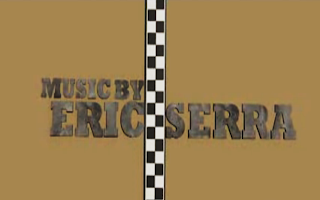
 The inspiration for the design of the desert road came from the DVD box for 'The Fifth Element'. I liked the way the checked pattern gives a sense of distance and speed and scale.
The inspiration for the design of the desert road came from the DVD box for 'The Fifth Element'. I liked the way the checked pattern gives a sense of distance and speed and scale.
I've decided to try and avoid having to use matte paintings for these shots, so the sand is a wide repeating pattern and I'm using camera positions to try and disguise the face that there is no sky.
When it came to composing the shots, I decided that Shots 10 and 11 provided too much variation to the already complex journey. This is why I have changed them to be more of an overhead shots.
The city is intended to be the second stage of the title sequence. I originally planned to have several 'helicopter' style flyover shots of the city. However, the time frame of this project dictated that the amount of buildings and size of the city needed to be as minimal as possible.
I started with the glass/text buildings which were the focal point of the shot. These used a slight glow and a metallic mental ray texture to really direct the viewers attention to them. The design of the other buildings in the city was a mixture of inspiration from buildings seen in the film itself and the intention of making them duller than the 'text buildings'.
One of the main buildings that made up the city was the octagonal buildings with the vertical subway carts.
This building will be key to make the city look active throughout the sequence as, apart from them the only other animation is the taxis moving.
I wanted the camera work in this section to mimic that if the wide helicopter shots that have become associated with large, open desert planes. This will mean that I will have to set up enough geometry or a matte painting that appears to go off to a horizon.

 The inspiration for the design of the desert road came from the DVD box for 'The Fifth Element'. I liked the way the checked pattern gives a sense of distance and speed and scale.
The inspiration for the design of the desert road came from the DVD box for 'The Fifth Element'. I liked the way the checked pattern gives a sense of distance and speed and scale.I've decided to try and avoid having to use matte paintings for these shots, so the sand is a wide repeating pattern and I'm using camera positions to try and disguise the face that there is no sky.
When it came to composing the shots, I decided that Shots 10 and 11 provided too much variation to the already complex journey. This is why I have changed them to be more of an overhead shots.
The city is intended to be the second stage of the title sequence. I originally planned to have several 'helicopter' style flyover shots of the city. However, the time frame of this project dictated that the amount of buildings and size of the city needed to be as minimal as possible.
I started with the glass/text buildings which were the focal point of the shot. These used a slight glow and a metallic mental ray texture to really direct the viewers attention to them. The design of the other buildings in the city was a mixture of inspiration from buildings seen in the film itself and the intention of making them duller than the 'text buildings'.
One of the main buildings that made up the city was the octagonal buildings with the vertical subway carts.
This building will be key to make the city look active throughout the sequence as, apart from them the only other animation is the taxis moving.
These buildings were inspired from the subway buildings that added to the unique design of the city in the film. I decided to use the vertical motion of the tram to flow from the horizontal tracking of the taxi.
Unfortunately, this the presentation day is tomorrow so I am going to have to compile what shots I have got completed in order to present for crit and analysis from the rest of the group. The city is still only half finished so I will render out a short scene to give an idea of how it is going to look.
Sunday, 17 February 2013
The Temple Element
This blog post will document the progress of the temple (opening of the title sequence) and will show the various steps.
Designing the temple
The design of the centre piece is inspired by one of the shapes on the wall in the film's temple, the top view of the centre piece is shaped like that pattern. There are 5 doors around the temple, one of which is the entrance.
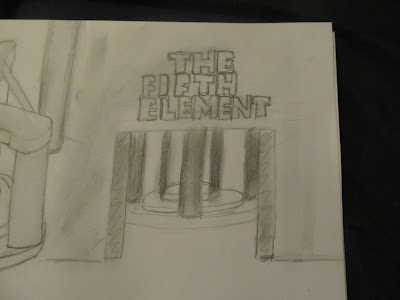
Planning the shots
Modelling the temple
As I have spent the Christmas getting to grips with modelling in Maya; I decided to use it to do all the 3D elements of the project. I Built the centre piece of the temple from the ground up. Starting with the base rings, then the supporting pillars then the top stones and stone banners.
I then layed out a grid for the sand and subdivided it several times. Using Maya's soft selection tool, I was able to model the waves of sand by moving one vertex and the rest would smooth into a hump shape.
The little rooms that can be seen through the door are a means of avoiding modelling outside geometry.
Texturing the temple
As i have not fully learnt how to UV unwrap in MAYA I used the UV texture projection tool to make sure that the textures were properly proportioned. Once I had a seamless texture i was happy with (edited in Photoshop); I used CRAZYBUMP to generate the various maps (mainly the normal) to give the textures some depth and make them react to light properly.
Particles
In the centre of the temple I wanted a cylinder of particles that rotate throughout the shots. To create this, I created an emitter and a cylinder, making the cylinder a collider. I then ran a particle simulation to generate a decent number of particles I then set the initial state of the particles so that they would all be visible from the start and turned off the emitter so the particles didn't become too dense. By adding a vortex field to the particle system i was able to make the particles turn inside the cylinder. I then cached the movement and position of the particles so they would always hold the same position at a specific frame.
Lighting and Rendering
After dismissing the vector renderer idea, i started playing around with vray, however, as it is only available on university computers i decided to switch to mentle ray which meant that I could utilise my time on my home pc as well. While not giving as gooder finish as vray, it was a suitible alternative based on the time frame.
Sequencing
In order to sync the animation up to the music track that I had mixed to merge with the actual film, I exported a xml sequence file from premiere. This allowed me to use Maya's camera sequencer to create the sequence I wanted and time it with the audio clip. I found that using this method gave me more flexibility to change the timings before rendering. Unfortunately Maya currently doesn't have a 'render sequence' option other than 'play-blast sequence' which is essentially a screen recorder. This meant that i had to render each shot individually, rather than set up a render que.
Final Product
Designing the temple
The design of the centre piece is inspired by one of the shapes on the wall in the film's temple, the top view of the centre piece is shaped like that pattern. There are 5 doors around the temple, one of which is the entrance.
The view through the doorway is such that you can see 5 pillars and the title of the film. This layout of 5 vertical lines can be seen throughout the film and various graphics on merchandise.

Planning the shots
Modelling the temple
As I have spent the Christmas getting to grips with modelling in Maya; I decided to use it to do all the 3D elements of the project. I Built the centre piece of the temple from the ground up. Starting with the base rings, then the supporting pillars then the top stones and stone banners.
I then layed out a grid for the sand and subdivided it several times. Using Maya's soft selection tool, I was able to model the waves of sand by moving one vertex and the rest would smooth into a hump shape.
The little rooms that can be seen through the door are a means of avoiding modelling outside geometry.
Texturing the temple
As i have not fully learnt how to UV unwrap in MAYA I used the UV texture projection tool to make sure that the textures were properly proportioned. Once I had a seamless texture i was happy with (edited in Photoshop); I used CRAZYBUMP to generate the various maps (mainly the normal) to give the textures some depth and make them react to light properly.
Particles
In the centre of the temple I wanted a cylinder of particles that rotate throughout the shots. To create this, I created an emitter and a cylinder, making the cylinder a collider. I then ran a particle simulation to generate a decent number of particles I then set the initial state of the particles so that they would all be visible from the start and turned off the emitter so the particles didn't become too dense. By adding a vortex field to the particle system i was able to make the particles turn inside the cylinder. I then cached the movement and position of the particles so they would always hold the same position at a specific frame.
Lighting and Rendering
After dismissing the vector renderer idea, i started playing around with vray, however, as it is only available on university computers i decided to switch to mentle ray which meant that I could utilise my time on my home pc as well. While not giving as gooder finish as vray, it was a suitible alternative based on the time frame.
Sequencing
In order to sync the animation up to the music track that I had mixed to merge with the actual film, I exported a xml sequence file from premiere. This allowed me to use Maya's camera sequencer to create the sequence I wanted and time it with the audio clip. I found that using this method gave me more flexibility to change the timings before rendering. Unfortunately Maya currently doesn't have a 'render sequence' option other than 'play-blast sequence' which is essentially a screen recorder. This meant that i had to render each shot individually, rather than set up a render que.
Final Product
Subscribe to:
Comments (Atom)
.JPG)










